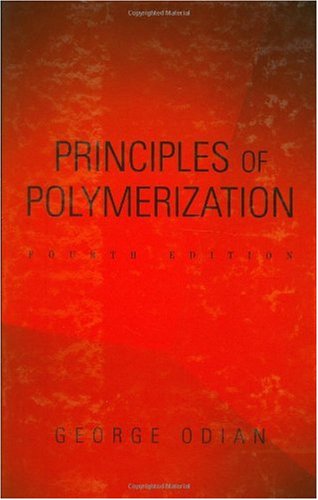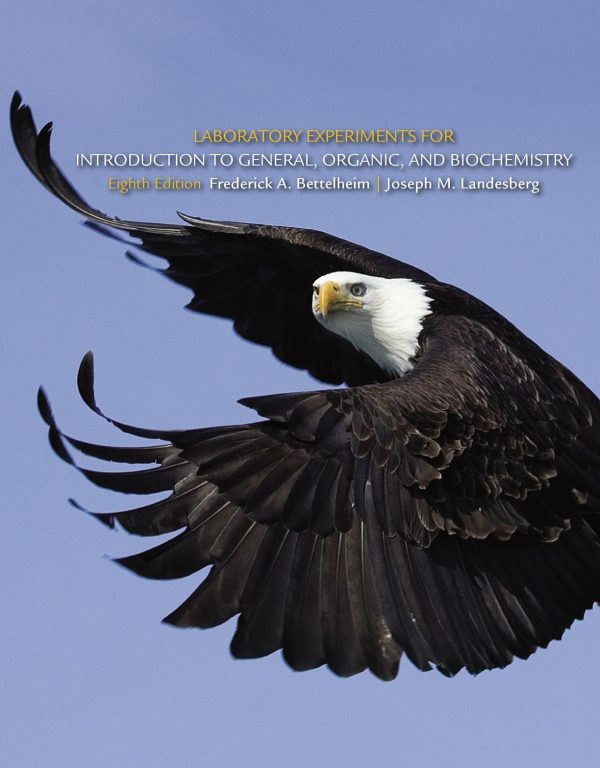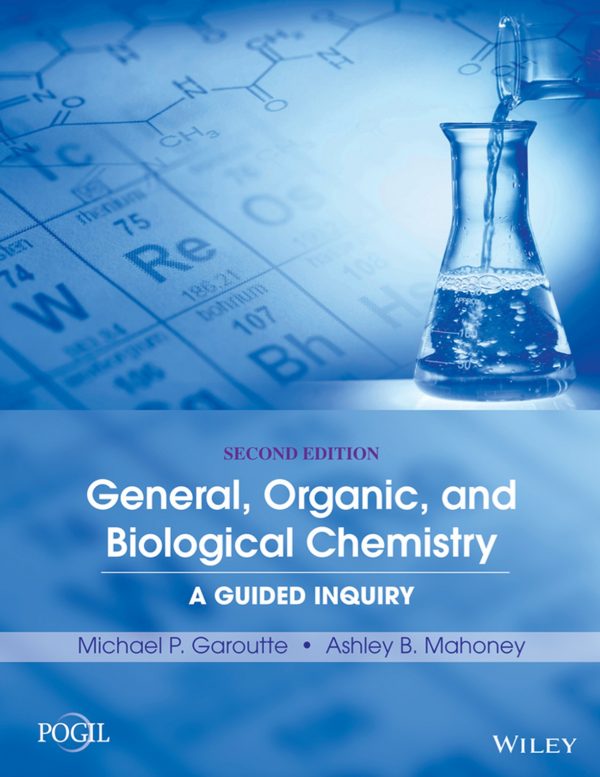George Odian9780471274001, 0471274003
The large chains of molecules known as polymers are currently used in everything from “wash and wear” clothing to rubber tires to protective enamels and paints. Yet the practical applications of polymers are only increasing; innovations in polymer chemistry constantly bring both improved and entirely new uses for polymers onto the technological playing field. Principles of Polymerization, Fourth Edition presents the classic text on polymer
synthesis, fully updated to reflect today’s state of the art. New and expanded coverage in the Fourth Edition includes:
– Metallocene and post-metallocene polymerization catalysts
– Living polymerizations (radical, cationic, anionic)
– Dendrimer, hyperbranched, brush, and other polymer architectures and assemblies
– Graft and block copolymers
– High-temperature polymers
– Inorganic and organometallic polymers
– Conducting polymers
– Ring-opening polymerization
– In vivo and in vitro polymerization
Appropriate for both novice and advanced students as well as professionals, this comprehensive yet accessible resource enables the reader to achieve an advanced, up-to-date understanding of polymer synthesis. Different methods of polymerization, reaction parameters for synthesis, molecular weight, branching and crosslinking, and the chemical and physical structure of polymers all receive ample coverage. A thorough discussion at the elementary level prefaces each topic, with a more advanced treatment following. Yet the language throughout remains straightforward and geared towards the student.
Extensively updated, Principles of Polymerization, Fourth Edition provides an excellent textbook for today’s students of polymer chemistry, chemical engineering, and materials science, as well as a current reference for the researcher or other practitioner working in these areas.
Table of contents :
Team DDU……Page 1
CONTENTS……Page 8
PREFACE……Page 26
1-1 Types of Polymers and Polymerizations……Page 28
1-1a Polymer Composition and Structure……Page 29
1-1b Polymerization Mechanism……Page 33
1-2 Nomenclature of Polymers……Page 36
1-2a Nomenclature Based on Source……Page 37
1-2c IUPAC Structure-Based Nomenclature System……Page 38
1-2d Trade Names and Nonnames……Page 43
1-3 Linear, Branched, and Crosslinked Polymers……Page 44
1-4 Molecular Weight……Page 46
1-5a Crystalline and Amorphous Behavior……Page 51
1-5b Determinants of Polymer Crystallinity……Page 54
1-5c Thermal Transitions……Page 56
1-6a Mechanical Properties……Page 59
1-6b Elastomers, Fibers, and Plastics……Page 62
References……Page 63
2 STEP POLYMERIZATION……Page 66
2-1a Basis for Analysis of Polymerization Kinetics……Page 67
2-1b Experimental Evidence……Page 68
2-1c Theoretical Considerations……Page 70
2-2 Kinetics of Step Polymerization……Page 71
2-2a Self-Catalyzed Polymerization……Page 73
2-2a-1 Experimental Observations……Page 74
2-2a-2 Reasons for Nonlinearity in Third-Order Plot……Page 75
2-2a-3 Molecular Weight of Polymer……Page 77
2-2b External Catalysis of Polymerization……Page 78
2-2c Step Polymerizations Other than Polyesterification: Catalyzed versus Uncatalyzed……Page 80
2-2d-1 Examples of Nonequivalence……Page 81
2-2d-2 Kinetics……Page 84
2-3 Accessibility of Functional Groups……Page 90
2-4a Closed System……Page 92
2-4b Open, Driven System……Page 94
2-5a Possible Cyclization Reactions……Page 96
2-5b Cyclization Tendency versus Ring Size……Page 97
2-5c Reaction Conditions……Page 99
2-5d Thermodynamic versus Kinetic Control……Page 100
2-6a Need for Stoichiometric Control……Page 101
2-6b Quantitative Aspects……Page 102
2-6c Kinetics of Nonstoichiometric Polymerization……Page 106
2-7a Derivation of Size Distributions……Page 107
2-7b Breadth of Molecular Weight Distribution……Page 109
2-7d Alternate Approaches for Molecular-Weight Distribution……Page 110
2-7e-3 Nonstoichiometry of Functional Groups……Page 113
2-8a Physical Nature of Polymerization Systems……Page 114
2-8b Different Reactant Systems……Page 116
2-8c-1 Description of Process……Page 117
2-8d Polyesters……Page 119
2-8e Polycarbonates……Page 123
2-8f Polyamides……Page 124
2-9a Branching……Page 128
2-9b Molecular Weight Distribution……Page 129
2-10 Crosslinking……Page 130
2-10a-1 Stoichiometric Amounts of Reactants……Page 132
2-10a-2 Extension to Nonstoichiometric Reactant Mixtures……Page 133
2-10b Statistical Approach to Gelation: Xw !1……Page 135
2-10c Experimental Gel Points……Page 138
2-10d Extensions of Statistical Approach……Page 139
2-11 Molecular Weight Distributions in Nonlinear Polymerizations……Page 141
2-12 Crosslinking Technology……Page 144
2-12a Polyesters, Unsaturated Polyesters, and Alkyds……Page 145
2-12b-1 Resole Phenolics……Page 147
2-12b-2 Novolac Phenolics……Page 151
2-12c Amino Plastics……Page 153
2-12d Epoxy Resins……Page 155
2-12e Polyurethanes……Page 157
2-12f Polysiloxanes……Page 159
2-12g Polysulfides……Page 161
2-13a Types of Copolymers……Page 162
2-13b-2 Alternating Copolymers……Page 165
2-13b-3 Block Copolymers……Page 166
2-13c Utility of Copolymerization……Page 167
2-13c-1 Statistical Copolymers……Page 168
2-13c-2 Block Copolymers……Page 169
2-13c-3 Polymer Blends and Interpenetrating Polymer Networks……Page 170
2-14a Requirements for High-Temperature Polymers……Page 171
2-14b Aromatic Polyethers by Oxidative Coupling……Page 173
2-14c Aromatic Polyethers by Nucleophilic Substitution……Page 176
2-14e Aromatic Polyimides……Page 178
2-14f Reactive Telechelic Oligomer Approach……Page 182
2-14g Liquid Crystal Polymers……Page 184
2-14h 5-Membered Ring Heterocyclic Polymers……Page 186
2-14i 6-Membered Ring Heterocyclic Polymers……Page 189
2-14j Conjugated Polymers……Page 190
2-14j-1 Oxidative Polymerization of Aniline……Page 192
2-14j-2 Poly(p-phenylene)……Page 193
2-14j-3 Poly(p-phenylene Vinylene)……Page 194
2-15a-1 Minerals……Page 195
2-15a-2 Glasses……Page 196
2-15a-3 Ceramics……Page 197
2-15b-1 Polymerization via Reaction at Metal Bond……Page 199
2-15b-3 Polysilanes……Page 200
2-16 Dendritic (Highly Branched) Polymers……Page 201
2-16a Random Hyperbranched Polymers……Page 202
2-16b Dendrimers……Page 204
2-17a-1 In Vivo (within Living Cells)……Page 207
2-17a-2 In Vitro (outside Living Cells)……Page 208
2-17c Cycloaddition (Four-Center) Polymerization……Page 210
2-17e Pseudopolyrotoxanes and Polyrotoxanes……Page 211
References……Page 212
3 RADICAL CHAIN POLYMERIZATION……Page 225
3-1b-1 General Considerations of Polymerizability……Page 226
3-1b-2 Effects of Substituents……Page 227
3-2a Possible Modes of Propagation……Page 229
3-2b Experimental Evidence……Page 230
3-3a Sequence of Events……Page 231
3-3b Rate Expression……Page 233
3-3c-2 Chemical and Spectroscopic Analysis……Page 235
3-4a-1 Types of Initiators……Page 236
3-4a-3 Dependence of Polymerization Rate on Initiator……Page 239
3-4a-4 Dependence of Polymerization Rate on Monomer……Page 241
3-4b-1 Types of Redox Initiators……Page 243
3-4b-2 Rate of Redox Polymerization……Page 244
3-4c Photochemical Initiation……Page 245
3-4c-1 Bulk Monomer……Page 246
3-4c-2 Irradiation of Thermal and Redox Initiators……Page 247
3-4c-3 Rate of Photopolymerization……Page 248
3-4d Initiation by Ionizing Radiation……Page 251
3-4e Pure Thermal Initiation……Page 253
3-4f Other Methods of Initiation……Page 254
3-4g-2 Mechanism of f







Reviews
There are no reviews yet.